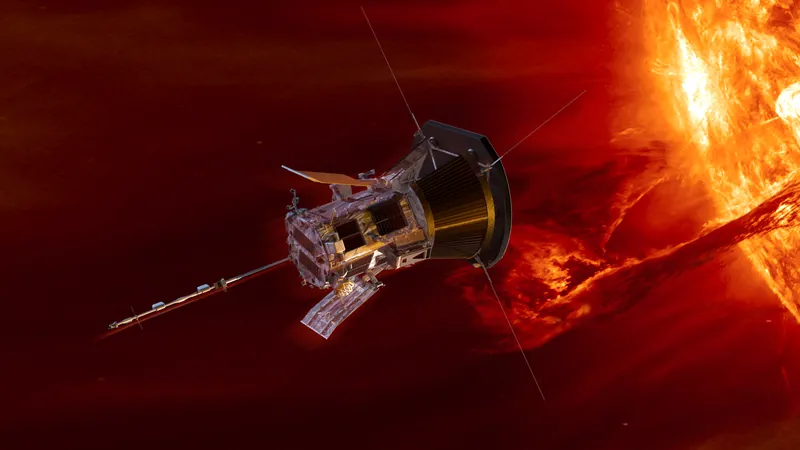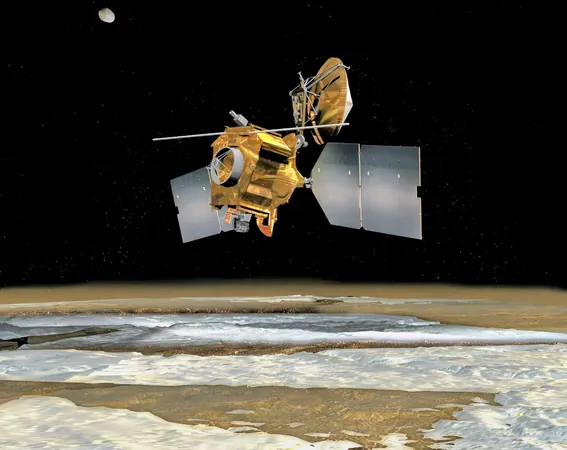
Parker Solar Probe Makes History by Touching the Sun's Outer Reaches!
2024-12-29
Author: Michael
A Groundbreaking Achievement
In a groundbreaking achievement for space exploration, NASA's Parker Solar Probe has successfully completed a record-breaking close flyby of our sun, marking the closest any human-made object has ever approached a star. On December 24, 2024, the spacecraft zoomed past the solar surface at a mere 3.8 million miles away, traveling at an astonishing speed of 430,000 miles per hour. This incredible speed not only sets a record for proximity but also for velocity, as no other spacecraft has ever moved this quickly.
Unraveling the Mysteries of the Sun
The Parker Solar Probe's mission is not just about getting closer to the sun; it also seeks to unravel some of the most profound mysteries regarding the sun's behavior and its impact on the solar system. Understanding our star is crucial, particularly from an astrobiological perspective. How a star interacts with its orbiting planets can dictate the potential for life to emerge, evolve, and thrive in habitable conditions. This knowledge is particularly important as scientists turn their focus toward studying M-dwarf stars, which have been found to contain Earth-sized planets potentially in their habitable zones, like the intriguing TRAPPIST-1 system.
Successful Close Approach Confirmation
Operations teams confirmed that the probe's close approach was successful, receiving a beacon tone on December 26 that indicated the spacecraft was functioning optimally after its stunning feat. As Nicky Fox, head of NASA's Science Mission Directorate, stated, “Flying this close to the Sun is a historic moment in humanity’s first mission to a star. By studying the Sun up close, we can better understand its impacts throughout our solar system and beyond.”
Journey Since 2018
The Parker Solar Probe has been on this journey since its launch in 2018. Utilizing a series of flybys of Venus, the spacecraft was expertly navigated into its optimal orbit, which brings it to the perfect distance from the sun every three months. This oval-shaped orbit allows the probe to gather unprecedented scientific data from the solar atmosphere, known as the corona, which reaches extreme temperatures of over 1 million degrees Fahrenheit. To survive these harsh conditions, the probe is equipped with a cutting-edge carbon foam shield that shields its instruments from the intense heat while maintaining their optimal working conditions.
Exciting Discoveries Ahead
What makes this mission even more exciting is how it provides invaluable data that enhances our understanding of solar phenomena. Already in previous passes, scientists have discovered unexpected structures within the solar wind and the outer boundary of the corona. These findings help illuminate how fast-moving solar winds are accelerated and how they might interact with potentially habitable planets in close proximity to their stars.
Anticipation for New Revelations
As researchers eagerly await the first data transmissions from the probe's latest solar pass, the excitement builds for what new revelations lie ahead. The Parker Solar Probe is paving the way for a golden era of exploration, not just of our sun, but of the cosmos itself, challenging what we know about stars and their influence on possible life beyond Earth.
Looking Ahead
The next close encounters with the sun are set for March 22 and June 19, 2025, promising more astonishing discoveries just over the horizon. Stay tuned, as this groundbreaking mission continues to redefine our understanding of the universe!









 Brasil (PT)
Brasil (PT)
 Canada (EN)
Canada (EN)
 Chile (ES)
Chile (ES)
 Česko (CS)
Česko (CS)
 대한민국 (KO)
대한민국 (KO)
 España (ES)
España (ES)
 France (FR)
France (FR)
 Hong Kong (EN)
Hong Kong (EN)
 Italia (IT)
Italia (IT)
 日本 (JA)
日本 (JA)
 Magyarország (HU)
Magyarország (HU)
 Norge (NO)
Norge (NO)
 Polska (PL)
Polska (PL)
 Schweiz (DE)
Schweiz (DE)
 Singapore (EN)
Singapore (EN)
 Sverige (SV)
Sverige (SV)
 Suomi (FI)
Suomi (FI)
 Türkiye (TR)
Türkiye (TR)
 الإمارات العربية المتحدة (AR)
الإمارات العربية المتحدة (AR)